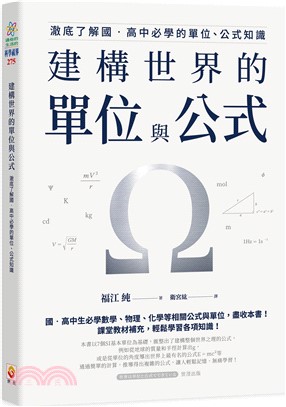名人/編輯推薦
目次
(Learning Objectives) 1
1.1 The concept of international settlement
1.2 The categories of international settlement
1.3 The risks involved in international settlement
1.3.1 Product production and transport risks
1.3.2 Credit risks
1.3.3 Adverse business risks
1.3.4 Political risks
1.3.5 Financial risks
1.3.6 Foreign exchange risks
1.4 Parties and their roles
1.5 The application of international payment
1.5.1 Payment in advance
1.5.2 Credit transactions
1.5.3 Collection
1. 5.4 Letter of credit (L/C)
1.5.5 Letter of guarantee and standby L/C
1.6 Evolution of international payment
1.6.1 From cash settlement to instruments settlement
1.6.2 From direct payment between traders to payment effected through a financial intermediary
1.6.3 From goods trading to documents trading
1.6.4 From paper documentary settlement to electronic documentary settlement
1.7 International rules and practice
Chapter 2 International Payment and Clearing System
(Learning Objectives)
2.1 Payment system
2.1.1 E-commerce payment system
2.1.2 Clearing process
2.2 SWIFT
2.2.1 Introduction
2.2.2 Characteristics
2.2.3 Types of SWIFT message
2.3 Some major payment system
2.3.1 CHIPS
2.3.2 FEDWIRE
2.3.3 CHAPS
2.3.4 TARGET
2.4 Correspondent banks in international settlement
2.4. 1 Banking institutions
2.4.2 Correspondent bank
2.4.3 Depository banks
Chapter 3 Instruments of International Settlement
(Learning Objectives)
3.1 An overview of negotiable instruments
3.1.1 Definition of a negotiable instrument
3.1.2 Chief features of a negotiable instrument
3.1.3 Parties to a negotiable instrument
3.1.4 Negotiable instrument laws
3.2 Bill of exchange
3.2.1 Definition of a bill of exchange
3.2.2 Contents of a bill of exchange
3.2.3 Parties to a bill of exchange
3.2.4 Classification of bill of exchange
3.2.5 Acts relating to a bill of exchange
3.3 Promissory note
3.3.1 Definition of a promissory note
3.3.2 Parties & characteristics of a promissory note
3.3.3 Contents of a promissory note
3.3.4 Classification of promissory: note
3.3.5 Difference between a bill and a note
3.4 Check
3.4.1 Definition of a check
3.4.2 Contents & features of a check
3.4.3 Parties to a check
3.4.4 Classification of check
3.4. 5 Check clearing & dishonor
3.4.6 Difference between a check and a bill of exchange
3.5 Other negotiable instruments
(Summary)
(Case Study)
Chapter 4 Remittance/50
(Learning Objectives)
4. 1 Outlines of remittance
4.1.1 Definition of a remittance
4.1.2 Parties to a remittance
4.1.3 Types of remittance
4.2 Procedure of remittance and comparison of M/T, T/T, and D/D
4.2.1 Procedure of remittance
4.2.2 Comparison of M/T, T/T, and D/D
4.3 Reimbursement of remittance cover and refund
4.3.1 Reimbursement of remittance cover
4.3.2 Cancel the remittance or refund the imbursement
4.4 The function of remittance in international trade
4.4.1 Payment in advance
4.4.2 Payment after arrival of goods
(Summary)
(Case Study)
Chapter 5 Collection
(Learning Objectives)
5.1 Outlines of collection
5.1.1 Definition of a collection
5.1.2 Parties to a collection
5.1.3 Types of collection
5.2 Documentary collection practice
5.2.1 Procedures of documentary collection
5.2.2 Terms of releasing documents
5.2.3 Collection instruction
5.2.4 Liabilities and disclaimers of banks
5.3 Risk protectionand financing under collection
5.3.1 Risk and protection for exporters and importers
5.3.2 Financing under the collection
(Summary)
(Case Study)
Chapter 6 Letter of Credit
(Learning Objectives)
6.1 Outlines of letter of credit (L/C)
6.1.1 Definition of a letter of credit
6.1.2 Roles of letter of credit
6.1.3 Characteristics of letter of credit
6.2 Parties to a letter of credit
6.2.1 Applicant/buyer
6.2.2 Issuing (buyer's) bank
6.2.3 Beneficiary (seller/exporter)
6.2.4 Advising (seller's) bank
6.2.5 Other parties
6.3 The major forms and contents of L/C
6.3.1 The forms of L/C
6.3.2 The contents of L/C
6.3.3 International rules and customs
6.4 Procedures of L/C
6.4.1 Application
6.4.2 Issuance
6.4.3 Amendment
6.4.4 Utilization
6.4.5 Negotiation of L/C by negotiating banks
6.4. 6 Documents examined and honored by issuing banks
6.4. 7 Payment by applicants
6.5 A specific case on the procedure of L/C
6.5.1 Background
6.5.2 Brief introduction of the case
6.5.3 Procedures
6.6 Examination of a documentary credit
6.7 Types of credit
6.7.1 Clean credit and documentary credit
6.7.2 Revocable credit and irrevocable credit
6.7.3 Confirmed irrevocable credits and unconfirmed irrevocable credits
6.7.4 Sight payment credit, deferred (usance) payment credit,
acceptance credit, and negotiation credit 110
6.7.5 Transferable credit, non-transferable credit, and back-to-back credit
6.7.6 Reciprocal credit
6.7.7 Revolving credit
6.7.8 Straight credit
6.7.9 Red clause credit
6.8 Key issues under letter of credit
6.8.1 Regarding the role of banks
6.8.2 Risk protection
6.8.3 Financing provided by banks under a letter of credit
(Summary)
(Case Study)
……
Chapter 7 Letter of Guarantee and Standby L/C
Chapter 8 International Factoring and Forfeiting
Chapter 9 Documents Used in International Settlement
Chapter 10 International Trade Terms
書摘/試閱
3.2.4 匯票的平中類
1.國際匯票和國內匯票
按照三個當事人居住地不同進行分類,可分為國際匯票和國內匯票。當匯票出票人、付款人、收款人的居住地中有兩個在不同國家,匯票在兩個國家流通時,被稱為國際匯票或外國匯票。國際結算使用的匯票多為國際匯票。當匯票出票人、付款人、收款人的居住地在同一個國家,匯票僅在一個國家內流通時,被稱為國內匯票。
2.即期匯票和遠期匯票
按照匯票的付款期限長短,可分為即期匯票和遠期匯票。即期匯票是指見票即行付款的匯票,所以也稱為見票即付匯票或即期付款匯票。遠期匯票是指必須到約定日期方可請求付款的匯票,即定期付款匯票。
3.商業匯票和銀行匯票
按照付款人和出票人的不同,可分為商業匯票和銀行匯票。當匯票出票人、付款人均是企業或公司時,被稱為商業匯票。當匯票出票人、付款人均是銀行時,被稱為銀行匯票。
4.銀行承兌匯票和商業承兌匯票
按照票據的信用基礎,可分為銀行承兌匯票和商業承兌匯票。銀行承兌匯票是指匯票上的付款人是銀行,由銀行承兌的遠期匯票。商業承兌匯票是建立在商業信用基礎之上的,由工商企業或個人承兌的遠期匯票,其出票人也是工商企業或個人。例如,出口企業出票、進口企業承兌。所以商業承兌匯票也是商業匯票的一種。
5.光票和跟單匯票
按照匯票是否跟隨單據,可分為光票和跟單匯票。當匯票不附帶單據時,稱為光票。當匯票附帶單據時,稱為跟單匯票。國際貿易結算中的單據一般有提單、商業發票、領事發票、保險單、包裝單、重量單、公證行報告、產地證明、衛生證明書等。具體附帶哪些單據,根據進口商委託往來銀行對出口商的商業信用狀況所規定的條件而定。由於跟單匯票體現了錢款與單據對流的原則,對進出口雙方提供了一定的安全保障。
3.2.5 票據行為
1.出票(Issue)
發出匯票包括兩個動作:一個是寫成匯票並在匯票上簽字,另一個是將匯票交給收款人,這樣就創設了匯票的債權,使收款人持有匯票就擁有債權。交付是指實際的或推定的所有權從一個人轉移至另一個人的行為。匯票的出票、背書、承兌的票據行為在交付前都是不生效的和可以撤銷的,只有將匯票交付給他人後,出票、背書、承兌行為才開始生效,並且都是不可撤銷的。
開出匯票時,出票人簽名於上,就要對匯票付款承擔責任,而付款人對於匯票並不承擔責任。因為匯票不是“領款單”,匯票是由出票人擔保的“信用貨幣”,收款人的債權完全依賴於出票人的信用。
2.背書(Endorsement)
背書是指匯票背面的簽字。只有持票人,即收款人或背書人才有權背書匯票。持票人要把票據權利轉讓給別人,必須在票據背面簽字並經交付,匯票權利即由背書人轉移至被背書人。背書包括兩個動作:一個是在匯票背面簽字,另一個是交付給被背書人,只有經過交付,才算完成背書行為,使其背書有效和不可撤銷。背書有以下幾種類型。
(1)特別背書(Special endorsement)
特別背書又稱記名背書,需要記載“支付給被背書人名稱的指定人”,並經背書人簽字,被背書人可用背書和交付方法繼續轉讓匯票。
已作空白背書的匯票,任何持票人可將空白背書轉變為記名背書。只要在背書人名稱簽字上面寫明“支付給×××(持票人自己的名稱或第三者的名稱)的指定人”即可。
(2)空白背書(Blank endorsement)
空白背書又稱不記名背書,即不記載被背書人名稱,只有背書人的簽字。當匯票空白背書後,交付轉讓給一個不記名的受讓人,他與來人抬頭匯票的來人相同,可以不需背書,僅憑交付再行轉讓,因為他沒在匯票背面簽字,對匯票就不承擔責任。
(3)限制性背書(Restrictive endorsement)
限制性背書是指“支付給被背書人”的指示帶有限制性詞語的背書。限制性背書匯票,禁止被背書人把匯票再行流通或轉讓,他只能憑票取款。
(4)有條件背書(Conditional endorsement)
有條件背書是指“支付給被背書人”的指示是帶有條件的背書。開出匯票必須是無條件的支付命令,作成背書可以帶有條件。附帶條件僅對背書人和被背書人有著約束作用,它與付款人、出票人無關。當匯票給付款人提示要求付款時,付款人不管條件是否履行,可以照常付款給持票人,匯票即被解除責任。帶有條件背書實際是指背書行為中的交付,只有在條件完成時方可把匯票交給被背書人。
主題書展
更多主題書展
更多書展本週66折
您曾經瀏覽過的商品
購物須知
大陸出版品因裝訂品質及貨運條件與台灣出版品落差甚大,除封面破損、內頁脫落等較嚴重的狀態,其餘商品將正常出貨。
特別提醒:部分書籍附贈之內容(如音頻mp3或影片dvd等)已無實體光碟提供,需以QR CODE 連結至當地網站註冊“並通過驗證程序”,方可下載使用。
無現貨庫存之簡體書,將向海外調貨:
海外有庫存之書籍,等候約45個工作天;
海外無庫存之書籍,平均作業時間約60個工作天,然不保證確定可調到貨,尚請見諒。
為了保護您的權益,「三民網路書店」提供會員七日商品鑑賞期(收到商品為起始日)。
若要辦理退貨,請在商品鑑賞期內寄回,且商品必須是全新狀態與完整包裝(商品、附件、發票、隨貨贈品等)否則恕不接受退貨。

























